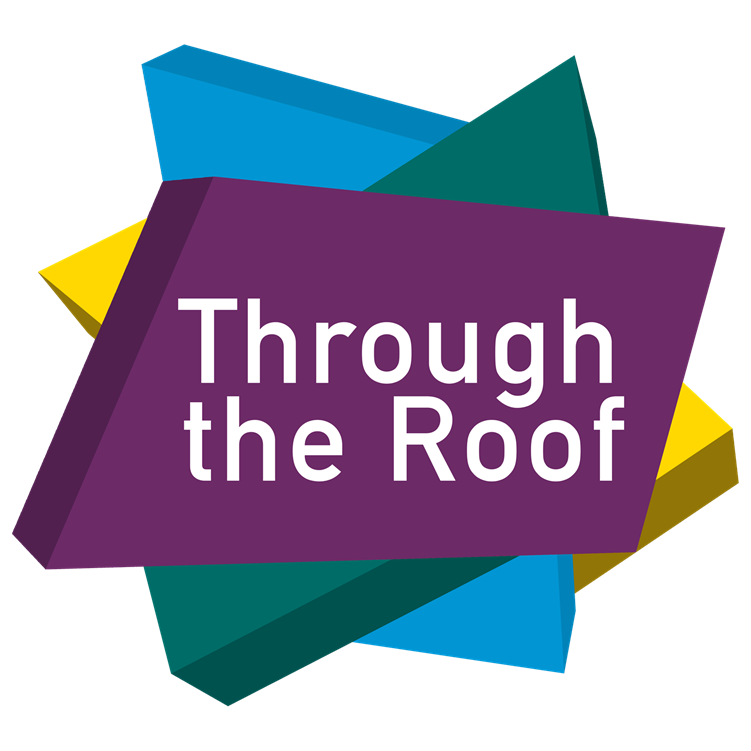The sunflower lanyard scheme. And what churches should know about it.

Tim Wood, CEO of Through the Roof, the church disability charity, reveals why sunflower lanyards are key to supporting individuals with hidden disabilities.
My son loves his sunflower lanyard! He loves wearing it to school, the shops, around the house, and church on Sundays. But we had to draw the line at him wearing it in bed.
If my son visited your church wearing his sunflower lanyard, would you know what it means?
This article gives you the information you need.
What is the Sunflower Lanyard Scheme?
The sunflower lanyard scheme is a worldwide scheme devised as a friendly and discreet way for people with hidden disabilities to highlight that they need a little extra help in daily life.
The Sunflower Lanyard Scheme raises awareness about hidden disabilities and promotes disability inclusion. The sunflower lanyard scheme can be found in places such as airports, universities, theatres, public transport, businesses and retail stores where those living with a hidden disability can discreetly wear a sunflower lanyard as an indicator of their need for extra support or more time.
Helping people with hidden disabilities
Not all disabilities are obvious, and here at Through the Roof, we are very aware that many people have been the subject of insensitive comments, such as ‘you don’t look disabled’. This is why the sunflower scheme is helpful.
A person wears a card with a bright yellow sunflower ribbon around their neck. On the reverse side, it has the person’s name, emergency contact and disability if they are needed in an emergency. Most of the time, the bright, positive symbol of the sunflower is enough of a visual cue to others that the wearer has an invisible disability and may need some extra support.
Hidden disabilities can manifest in a number of ways. It might be that someone has a hearing impairment, struggles with mental health, or is autistic, or has other additional needs, or mobility issues.
My son has a range of complex needs and is unable to verbally talk, although he has a good level of understanding. When people meet him and ask a question, he often replies with a pig noise or rolls his eyes. He isn’t being rude; it is because he can’t answer and is self-conscious enough to be a little embarrassed. He is looking for acceptance rather than a conversation.
When he wears his sunflower lanyard, it is a useful prompt that people might need to extend a bit of grace and understanding.
Who can wear the hidden disabilities sunflower?
There is no qualifying list for who is allowed to wear the hidden disabilities sunflower; the hidden disabilities sunflower lanyard scheme is there to help all who need a little extra support and understanding in their daily processes and routines.
Recognising and supporting sunflower lanyard wearers
 Acknowledging and accommodating those with hidden disabilities creates an environment of understanding. Wearing a sunflower lanyard provides wearers access to additional support that people should be aware of to accommodate the needs of hidden disability as they arise.
Acknowledging and accommodating those with hidden disabilities creates an environment of understanding. Wearing a sunflower lanyard provides wearers access to additional support that people should be aware of to accommodate the needs of hidden disability as they arise.
Wearing her sunflower lanyard helped Abigail, a volunteer with Through the Roof who is autistic. She recently visited India with other International Roofbreaker disability champions, to help raise awareness of disability inclusion in churches. The sunflower lanyard helped Abigail to overcome potential anxieties with the airport check-in process; it meant that she was able to access early boarding, and settle in on the plane – even before the business class customers! So the lanyard cut out some of the stress of airports, flights and airport security. Abigail shared: “I find wearing my sunflower lanyard really helpful. It means people know I’d welcome offers of help or support, but I don’t have to ask or explain every time I need it.”
Where can we get sunflower lanyards?
Our son picked up his sunflower lanyard for free from one of the hospitals he attends. If you have a hidden disability, you should be able to collect one from any hospital, business, school or organisation that is part of the scheme. To find out more about the scheme, you can visit the Hidden Disabilities Sunflower website: hdsunflower.com
Welcoming people with hidden disabilities
Churches are, or should be, the most welcoming places for anyone, including those living with a hidden disability.
If the church stewards or welcome team spot someone wearing a sunflower lanyard, this gives a helpful prompt that the person has a hidden disability and might need some extra time or understanding or may have questions about what will be happening in the church.
We suggest the best approach would be to open with a warm greeting plus a question, such as: ‘Welcome – We want to make sure you feel at home here. Is there anything we can do to support you?’
We appreciate that this might feel like a scary question if you don’t know how the person might reply. Offer help – but don’t be offended if help is declined. Most of the time, it is the willingness to help that disabled people are looking for, rather than a long list of equipment and requirements you can’t provide. Try to be accommodating and show their needs matter.
How can churches support people with hidden disabilities?
Promoting this sunflower-themed badge creates a more open environment that acknowledges hidden disabilities respectfully and shows people with hidden disabilities they are very welcome to the church family.
A great way to show solidarity while raising awareness about the sunflower lanyard scheme is by wearing a Sunflower Supporter Badge or wristband – organisations can also contribute by educating their staff members on how best to suitably assist sunflower lanyards wearers with any necessary assistance.
Further support for churches
If you are a church wanting ideas on how to support those with hidden disabilities, Through the Roof’s Roofbreaker project can provide you with free resources, such as our Church Disability Toolkit. Click on the following link to sign up as a Roofbreaker to join with over 600 others across the UK and be part of a growing network who are actively making adaptations for disabled people to access and belong to God’s family.
Please note: This article about the sunflower lanyard scheme is for information only. As a charity, we have no links with the scheme, which is run by a private company.

